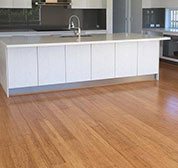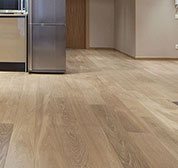Laminate installation Instructions
Laying Laminate Flooring
There are many good reasons to have laminate flooring. But once the choice has been made between tiles and planks, bevelled or smooth edges, oak effect or maple effect – or any other material – the next and crucial issue is to ensure that the newly-bought laminate flooring is installed correctly.
Of course, it is always possible to pay a "professional" to do this, but the cost involved is not necessary as laminate flooring is something that the average householder can do themselves without too much difficulty, just by following the correct instructions. With the right preparation, a bit of care and an attentive reading of directions, laying laminate flooring will be a manageable way of putting the new surface in place. And in addition to the pride of having an attractive new floor, the homeowner will be able to declare that it was all their own work.
Fitting Laminate Flooring
The business of fitting laminate flooring begins with checking the material first. Before starting the installation, check for any small problems and return any planks or tiles that have defects, as once they are installed the warranty will not cover them.
Another thing to check is that the floor below is in good order. There is no point laying laminate flooring on a surface that is uneven or structurally unsound. Indeed, if the floor below has a lot wrong with it then work will be needed on that before ANY new surface is installed. A surface that is slightly uneven may be sanded down and this will ensure the new laminate floor on top of it is nice and flat.
Finally, read the manufacturer guides, as these will provide the instructions needed for a simple assembly and installation.
How to Fit & Lay Laminate Flooring
Most laminate floors are click-system types and knowing how to fit laminate flooring like this is far from rocket science. The items will fit together like jigsaw pieces. The key is not to add too much glue, as this will form barriers between the edges.
One key measure that must always be undertaken is that of acclimation. This is because laminate is porous and will soak up moisture as it adjusts to the conditions of the house, leading to it expanding. If the floor were to be laid down without allowing time for this adjustment, it could lead to the planks or tiles swelling and making these fit badly together or – in the worst cases – buckling. However, by letting the material get used to its new home it will find its correct level and will be the right size and shape once it is fitted.
To make sure this happens, the material must be stored in the room where it is to be laid and not in an adjacent location, where the humidity levels may differ.
As well as this, there is also the fact that laminate will experience normal expansion and contraction as humidity and temperature levels will vary. This means that there should be a small gap between the edge of the room and the laminate, to allow for this.
Provided these guidelines are followed and the manufacturers instructions studied to establish the exact procedure to follow for each floor, there should be no problem with a householder installing their laminate floor themselves and enjoying it for many years thereafter.













